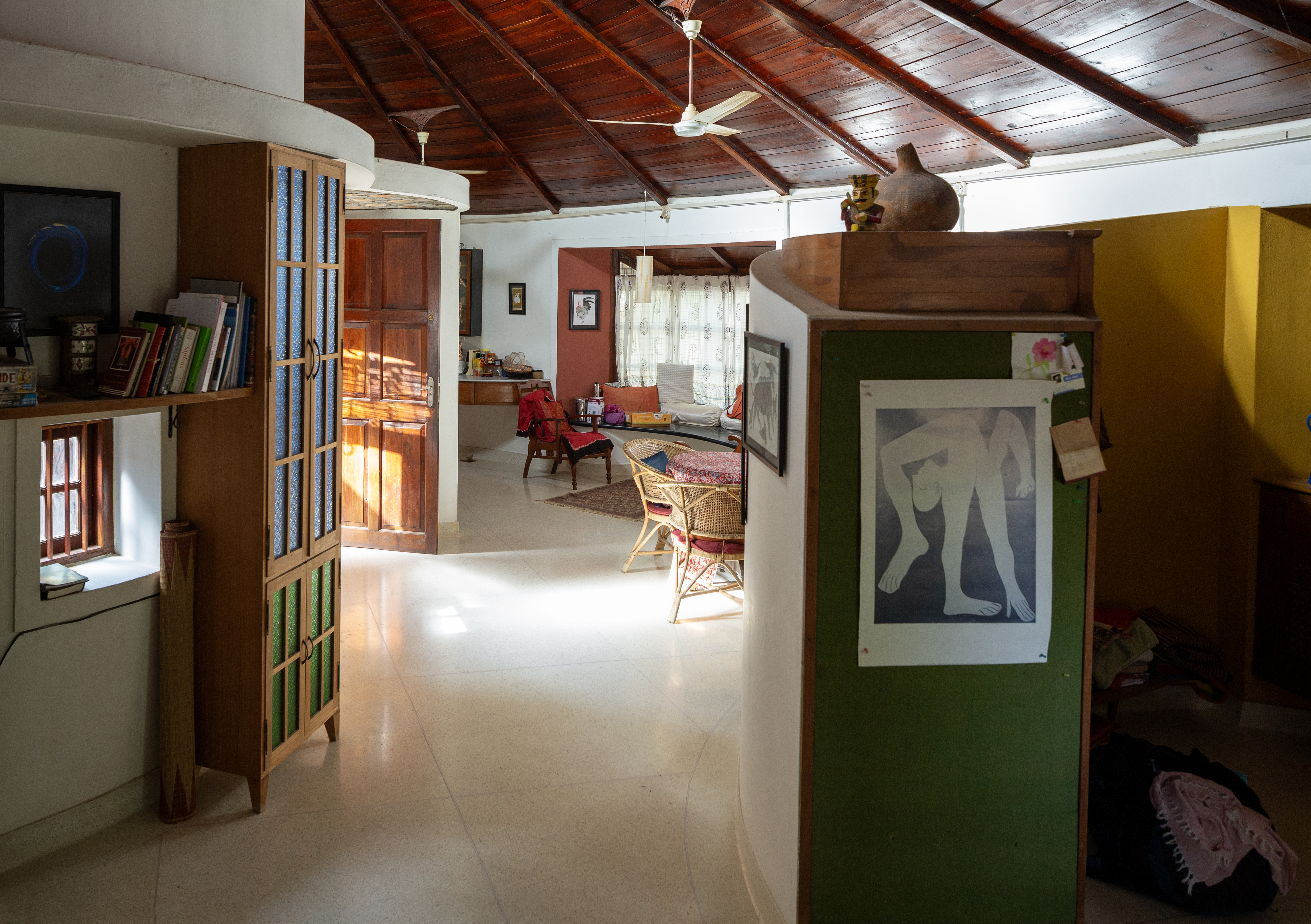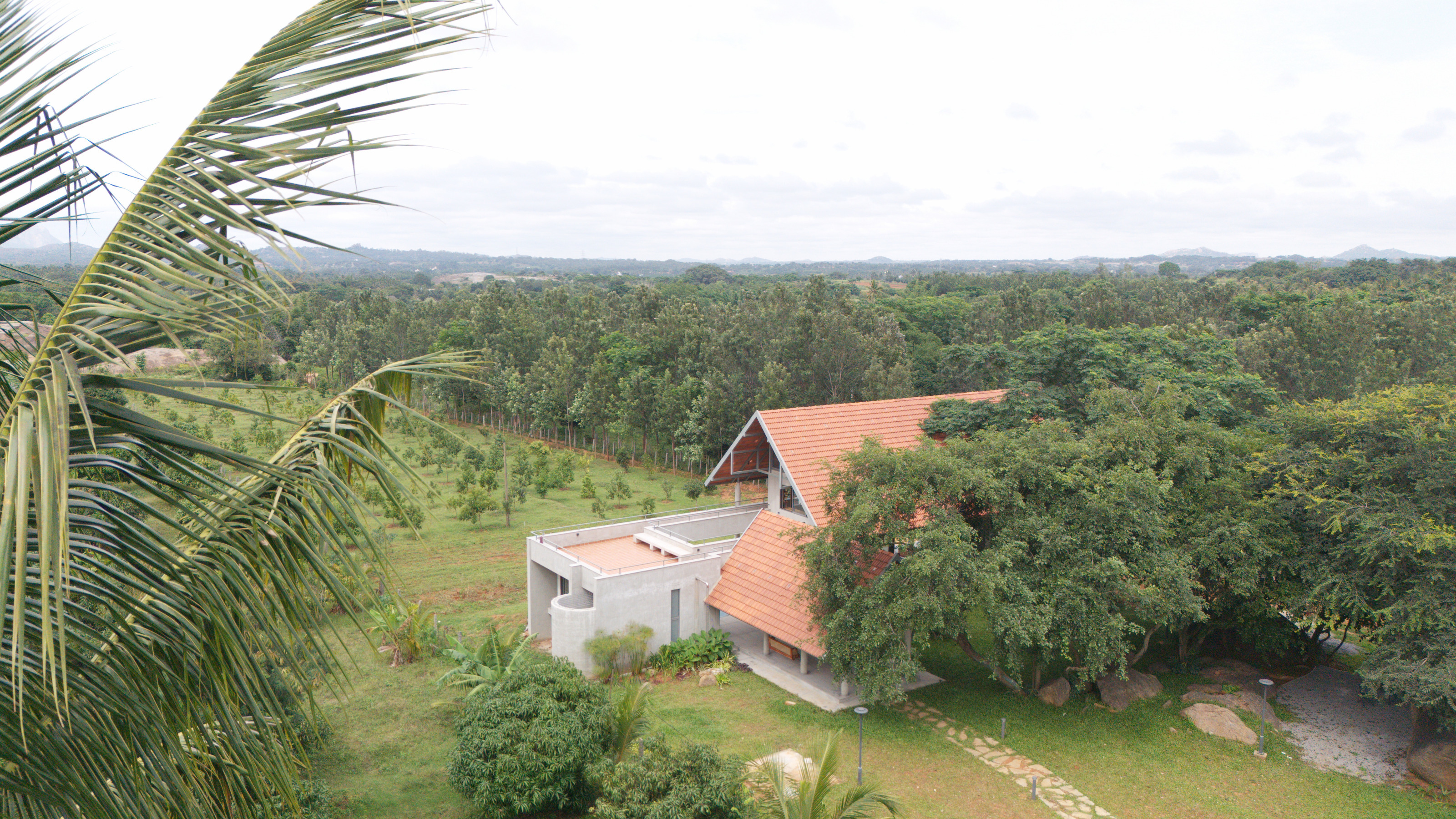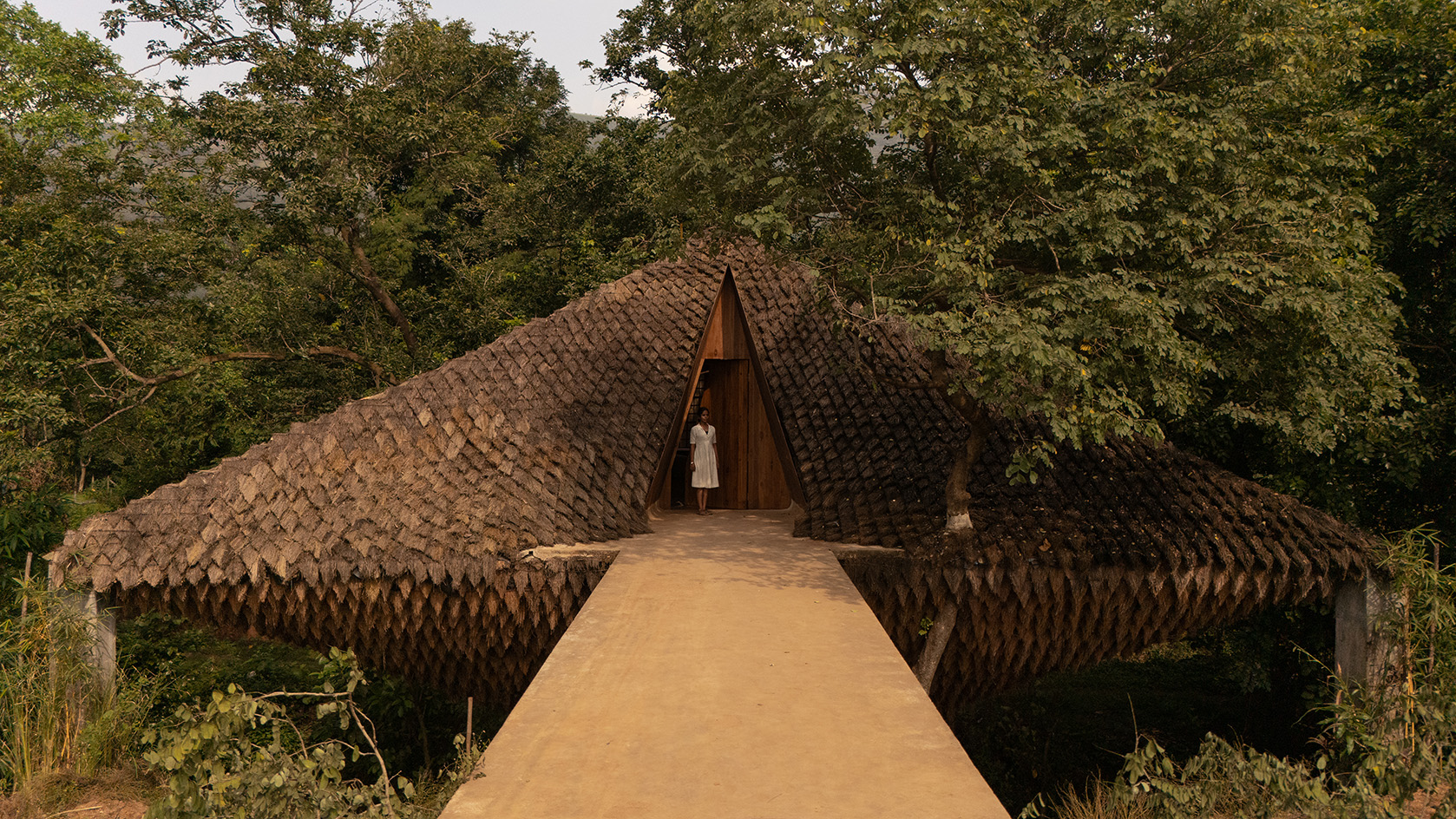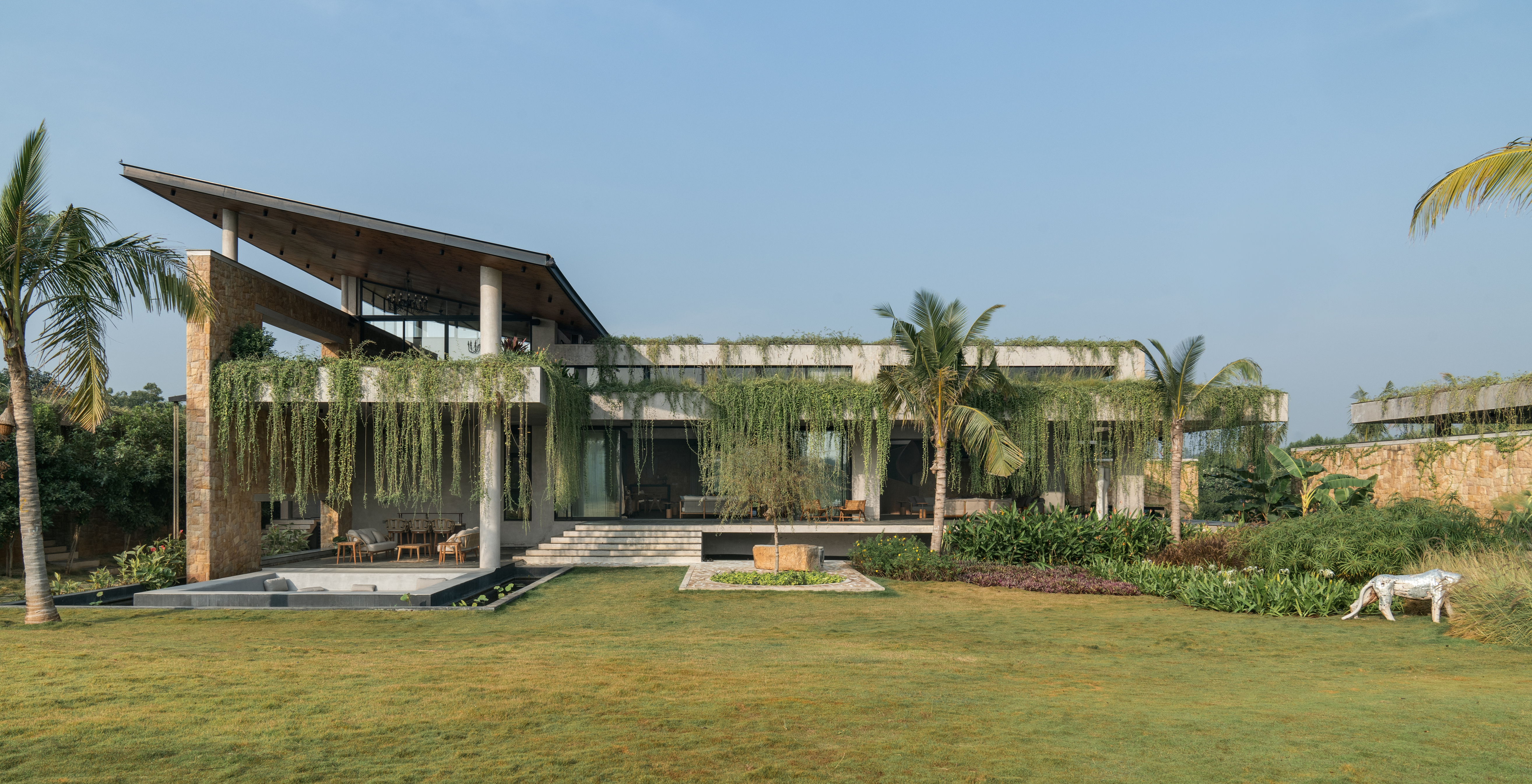
Christopher Charles Benninger, the influential architect, urbanist, and educator, passed away at 82 on 2 October 2024, in Pune, India. Born in Ohio, Benninger lived most of his life in India, which he regarded as his homeland, immersing himself in the country’s dynamic journey towards modernity.
Drawn by India’s vibrant tapestry of culture and its myriad post-colonial challenges, he engaged deeply with the nation’s aspirations. He embraced the belief that 'architecture is the art of creating space for the human spirit'. For him, architecture transcended mere design; it served as a catalyst for social change, reflecting the hopes and narratives of the communities it served.

Christopher Charles Benninger
Remembering Christopher Charles Benninger

TBMSG Nagaloka
After leaving a tenure position at the Harvard Graduate School of Design, Benninger co-founded the School of Planning at what is now CEPT University in Ahmedabad in 1971, alongside BV Doshi (Doshi also passed, in 2023). Education was central to his life. He established many important educational institutes and campuses, designed programmes and curricula, and taught and wrote extensively in both formal and informal capacities. His studio at India House in Pune became a vibrant nexus of creativity, now led by Ramprasad Akkisetti (Ram), his loving life partner, who continues to further his legacy.
'The best architecture is born from the dialogues we have with the world around us.' This philosophy underpinned Benninger’s work, inspiring future generations to engage meaningfully with their environments.

TBMSG Nagaloka
In a rapidly evolving India, he designed extensive low-income housing projects for urban development authorities and state governments between 1972 and 1986, established the Centre for Development Studies and Activities in Pune in 1976, and prepared development plans for cities in Sri Lanka (1979–83), India (1971–96), and Bhutan (1979–86).
His focus on community needs and poverty alleviation informed his notable projects, including the Mahindra United World College in Nanegaon, the Alliance Française in Gujarat, the Baja Science Centre, the Kochi Refinery Headquarters, Azim Premji University, and the SOS Children’s Village in Bhawana, Delhi. Additionally, he constructed the United Nations House in Bhutan and contributed to the Thimphu Capital Plan and National Ceremonial Plaza.

Mahindra United World College (MUWC)
Viewing cities as living entities, Benninger intertwined the narratives of people, buildings, and landscapes. He championed participatory planning, inviting communities into the design process to address urban challenges. His commitment to sustainability and culturally resonant design made him a pivotal figure in the discourse on equitable urban development.
Receive our daily digest of inspiration, escapism and design stories from around the world direct to your inbox.
Conversations with Benninger were expansive, exploring the diverse nature of India and the interplay of people and ideas. His life was a dialogue with emerging architects, revealing design philosophies rooted in authenticity and 'honest expression'. Fluent in local materials and cultural narratives, he practised 'critical regionalism', creating spaces that resonated deeply with their surroundings.

Alliance Francaise
He collaborated with and learned from luminaries such as José Luis Sert, Walter Gropius, Jerry Soltan, Fumihiko Maki, Kevin Lynch, Herbert Gans, Edmund Bacon, Margaret Mead, and Buckminster Fuller. He taught studios with Jane Drew and Roger Montgomery, studied economics under John Kenneth Galbraith, and became Barbara Ward’s protégé.
As he often remarked, 'Be, not seem', a philosophy that invites deeper engagement with the world. Benninger’s spirit, rich in critical thought and creative solutions, will continue to inspire architects and thinkers globally, reminding us of the profound impact design can have on society. His legacy invites us to celebrate life through the lens of thoughtful architecture.

India House
Aastha D. (she/they) is an independent scholar, essayist, and educator. They have degrees in architecture and its critical, curatorial, and conceptual practices. She founded the magazine Proseterity, and is also managing editor of the working group Insurgent Domesticities at the Center for the Study of Social Difference (CSSD) of Columbia University
-
 The Testament of Ann Lee brings the Shaker aesthetic to the big screen
The Testament of Ann Lee brings the Shaker aesthetic to the big screenDirected by Mona Fastvold and featuring Amanda Seyfried, The Testament of Ann Lee is a visual deep dive into Shaker culture
-
 Dive into Buccellati's rich artistic heritage in Shanghai
Dive into Buccellati's rich artistic heritage in Shanghai'The Prince of Goldsmiths: Buccellati Rediscovering the Classics' exhibition takes visitors on an immersive journey through a fascinating history
-
 Love jewellery? Now you can book a holiday to source rare gemstones
Love jewellery? Now you can book a holiday to source rare gemstonesHardy & Diamond, Gemstone Journeys debuts in Sri Lanka in April 2026, granting travellers access to the island’s artisanal gemstone mines, as well as the opportunity to source their perfect stone
-
 A day in Ahmedabad – tour the Indian city’s captivating architecture
A day in Ahmedabad – tour the Indian city’s captivating architectureIndia’s Ahmedabad has a thriving architecture scene and a rich legacy; architect, writer and photographer Nipun Prabhakar shares his tips for the perfect tour
-
 Inside a creative couple's magical, circular Indian home, 'like a fruit'
Inside a creative couple's magical, circular Indian home, 'like a fruit'We paid a visit to architect Sandeep Virmani and social activist Sushma Iyengar at their circular home in Bhuj, India; architect, writer and photographer Nipun Prabhakar tells the story
-
 The Architecture Edit: Wallpaper’s houses of the month
The Architecture Edit: Wallpaper’s houses of the monthFrom wineries-turned-music studios to fire-resistant holiday homes, these are the properties that have most impressed the Wallpaper* editors this month
-
 A refined Indian country residence reimagines the farmhouse
A refined Indian country residence reimagines the farmhouseSet among Karnataka’s rolling fields and forest, House by the Grove by Taliesyn Design & Architecture combines modern materials with an open approach to the elements
-
 Half bridge, half home: Wallmakers’ latest project takes architecture to daring new heights
Half bridge, half home: Wallmakers’ latest project takes architecture to daring new heightsHovering above a forest stream in Maharashtra, Bridge House pushes the limits of engineering and eco-conscious design
-
 The Architecture Edit: Wallpaper’s houses of the month
The Architecture Edit: Wallpaper’s houses of the monthFrom Malibu beach pads to cosy cabins blanketed in snow, Wallpaper* has featured some incredible homes this month. We profile our favourites below
-
 Cascading greenery softens the brutalist façade of this Hyderabad home
Cascading greenery softens the brutalist façade of this Hyderabad homeThe monolithic shell of this home evokes a familiar brutalist narrative, but designer 23 Degrees Design Shift softens the aesthetic by shrouding Antriya in lush planting
-
 A lush Bengaluru villa is a home that acts as a vessel for nature
A lush Bengaluru villa is a home that acts as a vessel for natureWith this new Bengaluru villa, Purple Ink Studio wanted gardens tucked into the fabric of the home within this urban residence in India's 'Garden City'